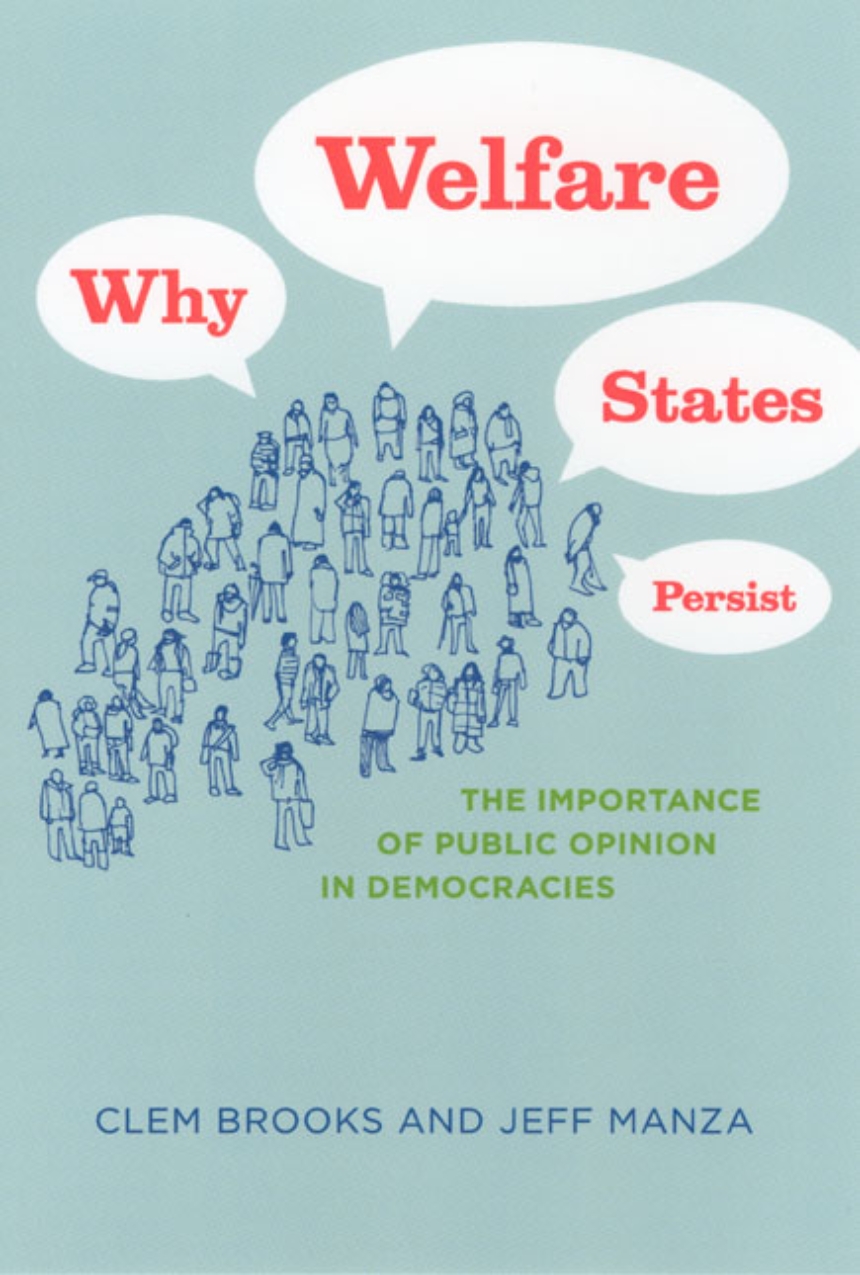Why Welfare States Persist
The Importance of Public Opinion in Democracies
Why Welfare States Persist
The Importance of Public Opinion in Democracies
The world’s richer democracies all provide such public benefits as pensions and health care, but why are some far more generous than others? And why, in the face of globalization and fiscal pressures, has the welfare state not been replaced by another model? Reconsidering the myriad issues raised by such pressing questions, Clem Brooks and Jeff Manza contend here that public opinion has been an important, yet neglected, factor in shaping welfare states in recent decades.
Analyzing data on sixteen countries, Brooks and Manza find that the preferences of citizens profoundly influence the welfare policies of their governments and the behavior of politicians in office. Shaped by slow-moving forces such as social institutions and collective memories, these preferences have counteracted global pressures that many commentators assumed would lead to the welfare state’s demise. Moreover, Brooks and Manza show that cross-national differences in popular support help explain why Scandinavian social democracies offer so much more than liberal democracies such as the United States and the United Kingdom.
Significantly expanding our understanding of both public opinion and social policy in the world’s most developed countries, this landmark study will be essential reading for scholars of political economy, public opinion, and democratic theory.
204 pages | 35 line drawings, 19 tables | 6 x 9 | © 2007
Studies in Communication, Media, and Public Opinion
Political Science: Comparative Politics, Political Behavior and Public Opinion
Sociology: Individual, State and Society
Reviews
Table of Contents
Acknowledgments
Introduction: The Welfare State, Mass Opinion, and Embedded Preferences
Chapter 1: Reaching for Mass Opinion
Chapter 2: Do Policy Preferences Explain Welfare State Differences?
Chapter 3: Retrenchment, Restructuring, Persistence
Chapter 4: The Question of Convergence
Chapter 5: Where Do Welfare State Preferences Come From?
Chapter 6: The Patterning of Social Policy Responsiveness
Chapter 7: Embedded Preferences and Welfare State Trajectories
Notes
References
Index
